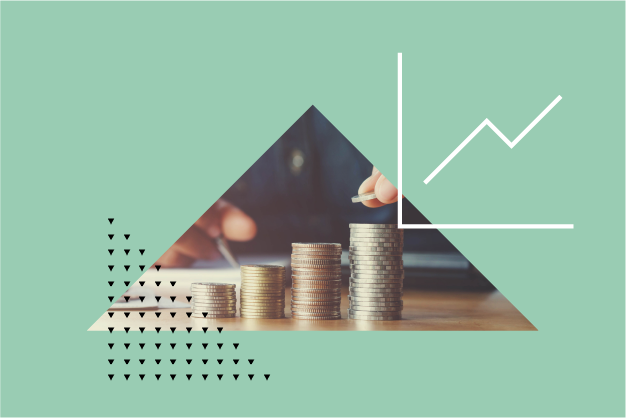
Choosing good investments and knowing how long to keep them to meet your performance-timeline goals is the key to long-term financial security. But quality and timing is only part of the challenge; how an investment is taxed can have a big impact on bottom-line profitability.
Preparing a tax return reveals the tax hit on your investment portfolio. This depends on your mix of the three primary sources of investment income – capital gains, dividends and interest – and ensuring you take full advantage of any available tax breaks. For the most part, capital gains and dividends are taxed more favourably than interest. The rates at which these are taxed depends on your province of residence and level of income.
To ensure your portfolio is well positioned from a taxation standpoint, it’s important to understand how these types of income are taxed and to consider some examples. For simplicity, we’ll look at the cases of investors with taxable incomes of $100,000 in the four biggest provinces: Ontario, British Columbia, Alberta and Quebec.
One-Half of Capital Gains are Taxable
If you sold a stock, bond, mutual fund or other capital investment during 2020 – not unlikely, given the year’s COVID-19-induced market volatility – you will have to report the resulting profit or loss on your tax return. The process of calculating tax on these “realized” capital gains (and the impact of losses) can be complex and must be documented using Schedule 3 of your federal return (and, for Quebec residents, Schedule G of the provincial return). Note that on-paper increases or decreases of an investment’s value are not taxable.
Tax must be paid on one-half of any profits realized from the sale of a capital investment. The amount of a gain is determined by subtracting the net proceeds from its adjusted cost base (ACB). The ACB consists of the price paid, plus the broker's sales commission or other acquisition costs.
A gain or loss is calculated by subtracting the investment’s sale price from the purchase price (including commissions or other fees paid in regard to both the buy and sell transactions). The difference is the capital gain (or loss). However, this may be difficult to determine if you gradually built a position in a stock or mutual fund through multiple purchases. Further complicating things would be any reinvested dividends, which represent additional share purchases.
Unlike most other forms of investment income, the amount of a capital gain is not provided on a CRA-prescribed tax slip. It is the individual investor’s responsibility to calculate and report the correct amount using the above-mentioned schedules. However, most investment dealers provide a summary of capital transactions made during the year, which will assist you in determining an ACB and ultimately the amount of a capital gain or loss.
Here is an example of how tax on a capital gain is calculated. Say you initially purchased 2,000 shares of a company at $10 each, on which you paid a flat $35 commission. Your cost was $20,035. The price eventually fell to $7, but you continued to have longer-term faith in the stock and you decided to add 1,500 more shares of that company at $7 a share (a $10,500 purchase), plus another $35 commission, for a total cost of $10,535. The average price worked out to $8.73 per share ($30,570 total purchase cost including commissions, divided by 3,500 shares purchased).
The share price then rebounded strongly, reaching $15 late last year, and you decided to take a profit on some of your position by selling 500 shares at that price, on which another $35 commission was payable. Your total proceeds were $7,465 ($7,500 less the commission). Based on an ACB of $4,367 ($8.73 average purchase price multiplied by 1,500 shares sold), the capital gain was $3,133 ($7,500 less $4,367) of which one-half, or $1,566, is taxable. For an Ontario taxpayer with taxable income of $100,000, the capital-gains tax on this transaction would be $680. In Quebec, the tax would be $716, in B.C. $600 and in Alberta, $564. (The effective tax rates for 2020 on the actual capital gains received are 21.7%, 22.8%, 19.1% and 18% in these provinces, respectively.)
Note that while capital-gains taxation rules also apply to mutual funds, there are some important adjustments to make when calculating the amount of the taxable gain when you sell fund units. This is because you are assessed tax each year on gains realized within a fund, as reported on a T3 or T5 slip provided to you by the fund manager. Income from the fund classified as a return of capital will also impact a fund investment’s ACB.
Capital losses resulting from the sale of an investment may be used to offset the amount of capital gains in a particular year. If you did not realize any capital gains last year but did sell an investment at a loss, you can use the latter to reduce any capital gains that you realized in any of the previous three years. Alternatively, you can retain that loss indefinitely for use in a future year.
Dividend Tax Credit
The amount of tax payable on dividend income received from Canadian sources is calculated using an unusual process. First, the actual amount received is “grossed up” to reflect the amount of pre-tax income on which the dividend-issuing corporation pays its 2020 taxes during the year. This the amount that theoretically would be taxable to the investor. However, to avoid tax being paid twice on this income (first by the corporation and then by the individual investor), the dividend tax credit is applied. Fortunately, the actual amount of dividends, the taxable (grossed-up) amount and the dividend tax credit are provided on the T5 and T3 slips (Quebec Relevé 3 and 16) and you receive from your investment dealer or mutual-fund company.
The Canadian tax system places dividends in three categories:
Dividends eligible for the enhanced tax credit: These are paid to individual investors by Canadian public corporations and certain large Canadian-controlled private corporations (CCPCs). The gross-up is 38%, and the amount of the dividend tax credit varies among provinces. In Ontario, an investor with $100,000 of taxable income would pay $254 in tax on $1,000 of eligible dividends, based on a tax rate of 25.4% on eligible dividends for someone in this income bracket). The same person in Quebec would pay $296 (at a 29.6% tax rate) and, in B.C. and Alberta, respectively, the tax would be $155 and $151 (at tax rates of 15.5% and 15.1%)
Non-eligible (small-business) dividends: Lower-capitalization CCPCs pay income tax at small-business rates, which are more favourable than those paid by large corporations. As a result, the dividends they pay out are taxed at a higher rate. Using the above example, the Ontario investor would pay $361 in tax on the $1,000 in dividends from companies this category, based on a tax rate of 36.1% on eligible dividends for someone in this bracket. In Quebec, B.C. and Alberta the tax would be $384 (38.4% rate), $314 (31.4%) and $285 (28.5%).
Foreign dividend income: Dividends paid to Canadian investors by foreign-based companies do not qualify for the tax credit and thus are taxed at the individual’s top marginal rate. Taxpayers in the same income bracket those provinces would pay, respectively, $434, $457, $383 and $360 on $1,000 in dividends from a foreign source, based on the top marginal tax rates in that income bracket.
Interest Income Fully Taxable
The interest you receive from bank accounts, term deposits, guaranteed income certificates (GICs) and periodic bond-coupon payments is fully taxed at your top marginal tax rate. You’ll owe the same amount of tax on $1,000 of interest income as for the foreign dividend income cited above.
Income Received Within RRSPs/RRIFs and TFSAs
Capital gains, dividends and interest accumulated on investments that are held within a registered account -- such as a registered retirement savings plan (RRSP) or registered retirement income fund (RRIF) remain within that account and are not subject to immediate tax. This income forms part of the tax-deferral afforded by these accounts and is taxed at your top marginal rate at the time money is eventually withdrawn from these accounts.
Capital gains, dividends and interest within a tax-free savings account (TFSA) are not taxable and not reported on your tax return.
Investment Expenses
Known in tax language as carrying charges, these include investment management or counselling fees and account custodial fees that are charged to your account. Note that brokerage transaction fees are included in the calculation of an individual security’s capital gain and thus cannot be claimed as a carrying charge.
Note that investment-loan interest is deductible only if you can prove there is a reasonable expectation of profit. (This usually is not an issue when you borrow to buy stocks or mutual funds.) Interest charged on RRSP loans and administration fees paid for RRSPs and RRIFs are not deductible.
The Lessons Learned
An important takeaway from your tax return is the need to make maximum use of TFSA. The same applies to tax-deferral vehicles – a RRSP, registered pension plan and locked-in retirement account (LIRA) – and their post-retirement successors, a RRIF, life income fund (LIF) and locked-in retirement income fund (LRIF).
It may be tempting to focus on highly taxed interest-bearing instruments in the above accounts and hold those that produce capital-gains and losses, and pay dividends, in a taxable account. However, you should not overlook the need to generate as much growth as possible within a TFSA and RRSP, and this means holding a good measure of equities within those accounts.
In taxable accounts, make sure you take full advantage of the capital-gains-tax rules, particularly use of capital losses such as tax-loss harvesting near the end of a year to reduce tax payable on gains made by other investments. However, you be strategic as to when you use capital losses. If you still have an overall capital loss after applying your losses to eliminate gains realized during same year, consider whether to use the remaining loss total to reduce capital gains tax you’ve paid in any of the previous three taxation years, or to save them for use in any future year.



















